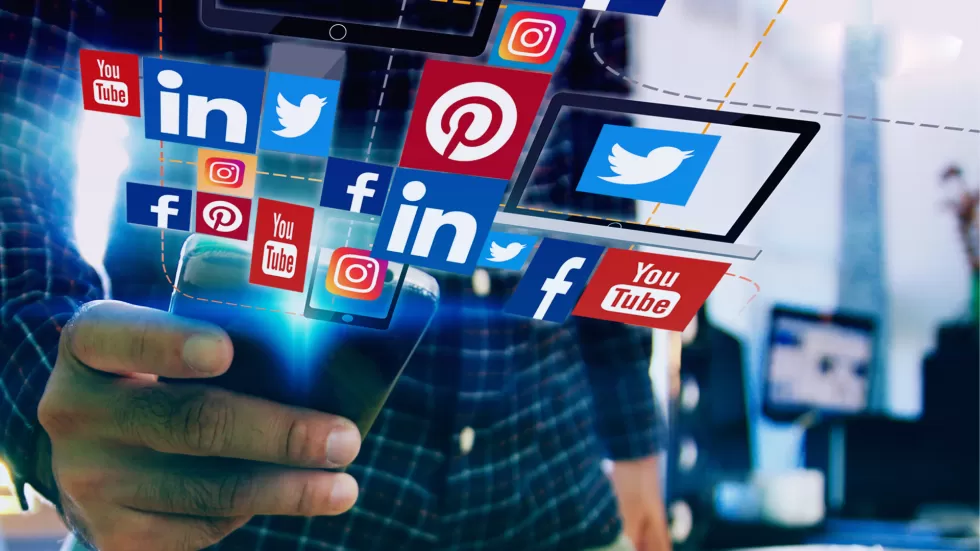The future of email marketing. It’s hard to imagine a world without email. More than 4 billion people were expected to have at least one email address by 2023, making email one of the most common forms of communication on the planet. With such a large user base, it makes sense that marketing teams try to capitalise on that base by sending their messages directly to their intended audience’s inboxes.
While most brands have some form of email marketing strategy, today’s consumers are generally savvy individuals who can instantly recognize the one-size-fits-all approach that many email marketers take.
As the internet and how people access it shift with the advent of new devices and standards, your email marketing strategy should reflect those changes.
Email marketing for SMBs – things to remember
1. Machine learning, AI and cloud-based technology will change the face of email marketing.
As in most industries today, machine learning and artificial intelligence are becoming a major part of email marketing. Advances in both forms of technology have made marketing automation a possibility, tailoring messages to an intended audience based on customer data.
Kent Lewis, president and founder of Anvil Media, said AI will “bring new and improved capabilities to email marketing” that will not only ensure campaigns comply with privacy regulations like GDPR but also give small business owners the tools to create major email campaigns without the need for large budgets.
“AI will automate and improve many aspects of email planning and management,” he said. “For example, AI can make quick work of what used to be elaborate and time-consuming A/B and multivariate tests, [and] optimize send times and personalization to a ‘hyper’ level based on demographics and, more importantly, predictive behaviour. Compliance with GDPR and other evolving regulatory restrictions has created tremendous complexity, which AI can help manage and simplify.”
2. Personalisation matters, hyper-personalisation matters more.
Whether your email marketing strategy targets individuals or other businesses, one thing remains certain: People want to feel like their specific needs are being met. Consider your email inbox for a moment. If you get an email that seems overly promotional or unrelated to your interests, you’re more likely to delete it or mark it as spam than read it.
“People simply open and react to emails that are tailored to them, but including their name and workplace is not enough,” said Jakub Kliszczak, marketing specialist at CrazyCall. “Taking it to the next step – personalising the email according to the website they’ve been on recently or things they like or recently did – is much more powerful. This sense of familiarity creates trust, which, especially nowadays, is key to creating a relationship.”To that end,
Olga Mykhoparkina, chief marketing officer at Chanty, said hyper-personalisation is the future of email marketing. While some intransigent marketers still focus on list segmentation based on general demographic and psychographic data, Mykhoparkina believes most marketers can do better to drive engagement. Indeed this is corroborated by analysis by both McKinsey and Statista proving that predictive personalisation software obliterates the ROI of standard promotion and marketing email by as much as twenty times the return. .
The solution is AI machine learning hyper-personalisation software, of which there is a significant distinction between those on offer. We offer one such example, which uses data captured from each consumer as they visit your site, including what they look at, return to most often, etc. It then incorporates this into an algorithm of both that individual’s buying history and their perpetual purchases.
It then ranks every SKU on your site, by the greatest likelihood of imminent purchase. So instead of tackling the uphill battle of convincing that person to buy a specific product, (this season’s stock for example) that they might never have seen before, and therefore in the main resent the hard-sell, it uses a predictive analytics algorithm to work out what you have achieved already, and simply capitalise on it. i.e. show the products they have already begun to look at and align with their previous purchase symbiotically.
3. Interactive email will more easily bridge the gap to a sale.
Today, email services are generally relegated to a specific application or web address, but email marketing experts believe more interactive emails will take the industry by storm in the coming years.
What that means depends on who you ask, but we could start seeing emails that look and operate like their own miniature web experiences. With features like enticing video content, interactive calls to arms, and in-email instant messaging, email marketing materials could become portals to products or services.
“The more interactive you can make something, the more people look forward to using it,” said Zarar Ameen CEO of CANZ Marketing. “There’s tons of space for email marketing to grow in terms of interactivity.”
Such changes to the way email marketing campaigns are created could increase customer engagement and click-through rates. Combined with AI technology, interactive components could “pull user-generated content into emails dynamically, creating more compelling storytelling and increasing read and engagement rates.”
4. Captivating storytelling will drive email marketing.
Everybody loves a good story, and if your small business has one, your email marketing plans should reflect that. Tasmin Lockwood, head of content at Radial Path, said customers want to cement their relationship with a brand.
“[Newsletters] give insight to employees, culture, social consciousness and plans for the future,” she said. “As a result, the customer feels like they are on a journey alongside the company.”
Casually sending newsletters not only lets people connect to your business, but it also does so in a way that jumps out in an inbox.
“It doesn’t have to be exclusively about your business – at Radial Path, we put together a weekly roundup of tech and telecommunications news,” Lockwood said. “This shows prospects that we’re up to date with the latest innovations and know tech well, which reinforces our expertise while offering value to a wider demographic and building a strong, engaged email list. This keeps existing customers in the funnel, represents value-added content for new prospects, and generally keeps customers engaged without having to go onto your site.”
5. User-generated content will become more common in marketing emails.
Customers are more likely to buy products that other people recommend. When you include user-generated content in your marketing emails, you demonstrate that actual people buy what you sell and, more importantly, that they enjoy your product enough to share it with the world.
To obtain user-generated content, you can automatically send emails after purchases that ask customers to leave reviews with photos. You can then include these reviews and photos in your emails. You won’t have to pay any extra money to obtain this content, making it a great form of free email marketing.
6. Data privacy will be paramount.
Following the implementation of the General Data Protection Regulation (GDPR) and changes to email marketing rules, you must be able to prove that the customers on your email list have opted into your emails. These changes reflect increasing customer concerns over data privacy.
Addressing this concern can be as simple as stating that your emails adhere to Payment Card Industry (PCI) compliance and GDPR standards. You should also send emails whenever you change your privacy terms. Alongside these updates – and every email – should come opt-out opportunities. This way, if customers feel uncomfortable with your data practices, they can unsubscribe and safeguard their information.
The right email marketing software matters.
The best email software for your business should equip you to handle the future of email marketing. That means the software should come with features offered by hyper-personalisation software. Installed, your small business will be prepared for the future of email marketing and reaching your audience in new, creative and effective ways.





